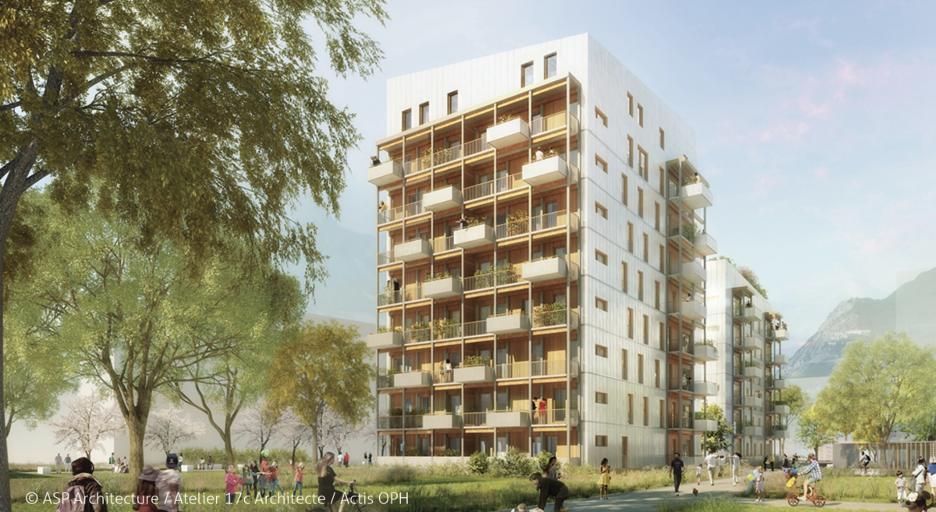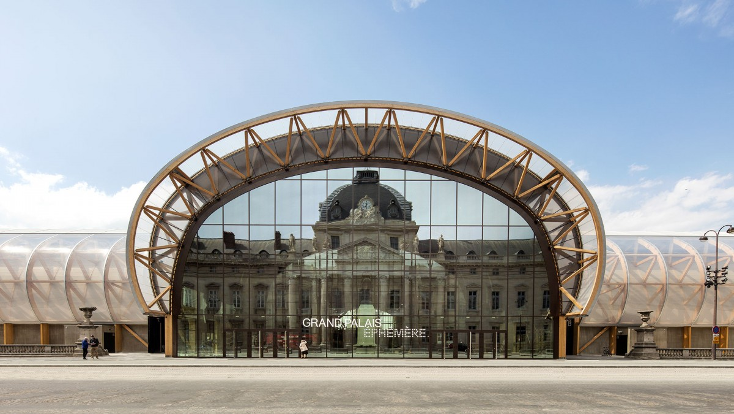 credit : Nick Hillier sur Unsplash
credit : Nick Hillier sur Unsplash
The thorny management of a precious resource
Using wood for construction offers enormous environmental benefits. A recent study published in Nature communications by researchers at the Potsdam Institute for Climate Impact Research explains how it could avoid 106 billion tons of CO2 from being emitted into the atmosphere by 2100 (provided that 90% of new buildings are made of wood!). However, this estimate presents a conundrum for effective forest management. For example, it would require 149 million hectares of (non-natural) plantation forest – a colossal figure considering that the planet currently has 131 million hectares. The issue is all the more complex as plantation forests do not represent the same biodiversity, nor the same carbon reserve as natural forests. Sini Eräjää, Greenpeace’s European food and forests campaign lead, told the Guardian that cutting down natural forests for plantations would be “a disaster for nature and for the climate”. An assertion corroborated by the IPCC, which recalls that forests and their soils represent the second largest carbon sink on the planet after the oceans. The extensive planting of trees also opens up other issues, such as competition with agricultural land or that of wildfires, which are much more devastating for non-natural forests.
Reducing (further) wood’s footprint
Despite these challenges, wood frame construction offers exceptional environmental performance. It could represent a 25% drop in a building’s carbon footprint thanks to the decrease of carbon-intensive industrial processes (steel, cement), the use of wood by-products to replace fossil fuels, to biogenic carbon storage in wood, or even thanks to less energy being consumed during the construction or demolition phases.
In addition to the material’s natural qualities, the timber industry is innovating and trying to further reduce its impact, such as investments in low-temperature dryers capable of operating almost exclusively from waste (i.e. bark dust). It’s a way of reducing energy dependence on gas while consuming up to 10% less energy. The use of wood also suggests new hybrid materials with low environmental impact, such as “wood concrete”, developed by CBB in Isère (France). Made from 90% wood and 10% additives, their TimberRoc solution is “zero carbon” certified.
Construction processes: rediscovery and innovation
The largely favourable context for wooden construction also encourages construction process innovation. Some solutions are based on rediscovering and adapting old methods, as is the case of Toyota, which has chosen wood for building its experimental city of the future, Woven City. The group relies on a centuries-old tradition (kigumi) to create simple and efficient assembly techniques, which don’t require steel or aluminium.
Others are trying to push the limits of what is possible thanks to glulam (glued laminated timber) or CLT (cross-laminated timber), which are helping wooden constructions reach unprecedented heights. With a height of 85m, Mjøstårnet tower in Norway has held the record since 2019. The Rocket&Tigerli project in Zurich is planned for 2026 and should reach 100m, using wood as a “natural replacement for concrete”.
Apart from its structural performance, wood is also suitable for prefabrication processes, helping to reduce construction times while promoting modularity. At the future Paris 2024 Olympic Village, VINCI Construction France has built two mixed wood-concrete buildings as part of the Universeine project. 137 rooms will also be built off-site by E-Loft before being adapted into studios after the event. Wood prefabrication also reduces costs by encouraging standardisation, as illustrated by the Forum am Seebogen, built in Vienna, Austria.
Prices going up and down
While wood has shown to have many qualities, it often comes up against the question of price (it is traditionally considered 10 to 15% higher in wood construction). Pandemic-related lockdowns and the war in Ukraine have also led to high price volatility, which makes the future difficult to read. On the other hand, wood could become competitive again in the medium term. This is thanks to the economies of scale due to its success, but above all in comparison with materials that require a lot of energy (such as cement or steel), the price of which is likely to soar in the long term and which could come up against increasingly strict carbon legislation.
In pictures: Haut-Bois in Grenoble
Inaugurated at the beginning of 2022, the Haut-Bois building in Grenoble puts into practice a large number innovations related to wooden construction. This nine-storey building takes advantage of wood’s seismic qualities in a risk zone. It also relies on wood’s insulating qualities and a double-flow ventilation system to obtain the Passivhauss quality label. What’s more, it also promotes the local sector by mainly using wood from the Alps.

In pictures: Grand-Palais Éphémère
Built to replace the Grand-Palais while it’s closed for renovations, the Grand-Palais Éphémère shall sit centre stage on the Champ de Mars until the end of the 2024 Olympics. Its design is a synthesis of the virtues of wood construction. Built in less than eight months on a site that doesn’t require water, it will be just as easy to dismantle. The structure consists of 44 monumental arches, making for a space without posts or structural elements. Its construction required 1500 m² of wood, the equivalent of “one minute 13 seconds of growth of European forests”, according to Chris Dercon, president of the Rmn – Grand Palais.
 credit : Patrick Tourneboeuf – Tendance Floue
credit : Patrick Tourneboeuf – Tendance Floue
The right material in the right place
Long reserved for small structures or individual housing, wood today frees itself from a certain number of constraints in terms of structural height and size. It’s encouraging us to reinvent a culture of wood construction that is both ambitious and unique. As Matylda Benoist, engineer in wood construction, explains to RTS, “We can’t just copy and paste large concrete constructions and pass it off in wood”. It’s also forcing us to reinvent certain partnerships between materials. The combination of concrete and wood can capitalize on both the acoustic properties of concrete and the lightness of wood. Meanwhile, the combination of steel and wood can achieve structural feats while guaranteeing a low impact on construction sites. When considered as an engineering material, wood opens up exceptional possibilities for those involved in construction.

